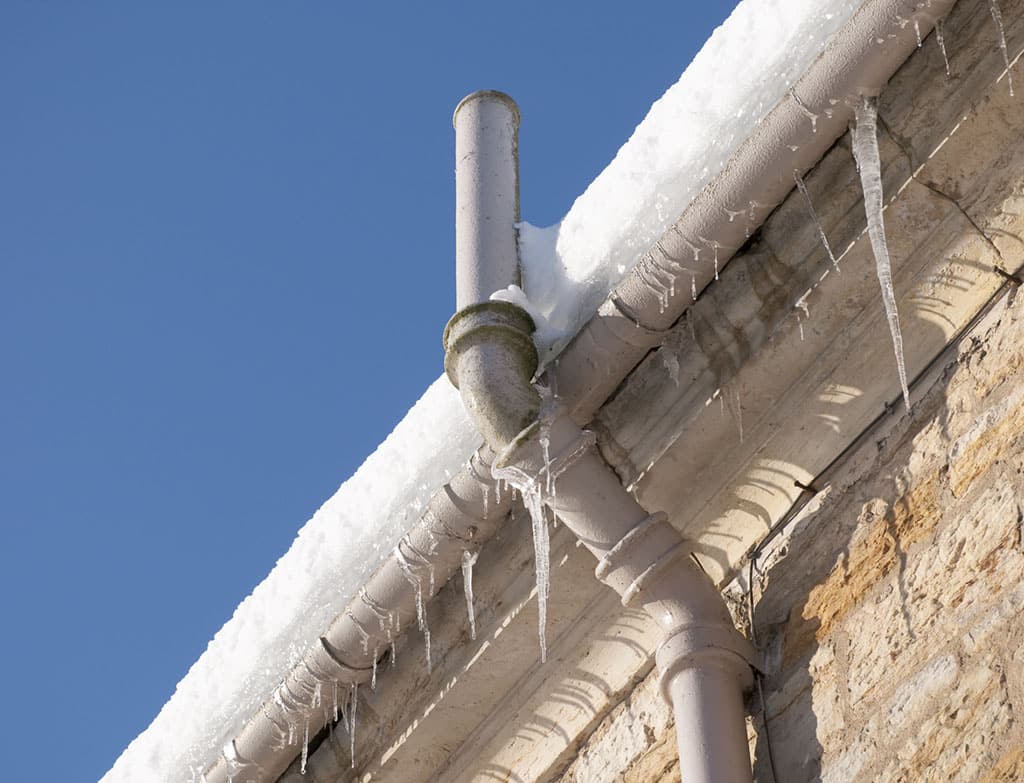Emergency Plumbing: What to Do When Pipes Freeze and Burst
Rhode Island’s HVAC Experts for 90+ years!

When you wake up on a frosty morning and are ready to take a hot shower, you expect to warm up in no time. But when there’s no water at all, or worse, the sound of water gushing from a burst pipe, you know you have a frozen pipe emergency. Dealing with a winter plumbing nightmare is never something a homeowner wants to face, but there are things you can do to face those critical first moments to get on top of the crisis as soon as possible.
The team at Martel Plumbing & Heating is always here for all of your plumbing emergencies. From frozen to burst pipes, we can get your home back on track with professional Rhode Island plumbing leak detection and repair. We also have some pro tips on how to handle a plumbing emergency to mitigate the damage.
Why Do Pipes Freeze During the Winter?
When the temperatures drop below freezing, any water, even drops, inside of your poorly insulated or exposed pipes can turn to ice. Ice can quickly expand as it freezes and the pressure inside builds up and leaves the pipe with nowhere to go but out. As a result, it bursts or cracks. When the ice melts, the water gushes out and leaves you with water damage and a plumbing emergency.
Pipes usually freeze when they’re located in unheated or poorly insulated areas, like basements, attics, or crawl spaces. Even a minor snap can wreak havoc on plumbing that isn’t winter-ready. Frozen pipes are an inconvenience, but they’re also expensive to deal with. Between plumbing damage and water damage, you have several crises to address. You’ll also have skyhigh water bills. The most important thing you can do is stay focused and act quickly when a plumbing emergency strikes.
Step-by-Step Guide: What to Do When Pipes Freeze
If you have a frozen pipe or have one that’s about to burst, here are some pro tips to tackle the problem as quickly as possible:
1. Turn Off the Water Supply
Before you do anything else, turn off your main water shut-off valve and turn it off. It will stop the additional water from flooding into the pipe and prevent further damage. The main water supply is in your basement, crawlspace, in the front of your property, or near your water meter.
2. Identify the Frozen Pipe
Take a look at your exposed pipes and look for frost on the exterior, bulging sections, or any areas that feel colder than others to the touch. If you suspect a burst pipe or break but aren’t sure about the cause, call our emergency plumbers right away. We’ll come out and get on top of the problem as soon as possible, 24-hours a day.
3. Safely Thaw Out Your Pipe
If your pipe is frozen but still intact, you can try to thaw it yourself, but you need to do it safely to avoid damage.
- Use a hair dryer or heating pad to apply heat directly to the pipe.
- Wrap the pipe with warm, damp towels.
- Never use an open flame, or you could damage the pipe further.
- Never leave a space heater unattended to thaw your pipes.
Work on thawing your pipe near the faucet and work your way backwards to the frozen area. The goal is to reduce the pressure inside of your pipe by making sure the melting water has somewhere to go.
4. Open the Faucet
Try turning on the faucet that’s connected to your frozen pipe. If you can get a slow trickle of water to come through, you’ll help relieve the pressure and encourage the ice to melt faster.
5. Contain the Damage to Your Pipes
If you need burst pipes help, do whatever you can to contain the mess before it gets any worse. Grab buckets, pans, and towels to catch the leaking water and move away furniture and valuables. Call one of Martel’s emergency plumbers right away, especially if you’re experiencing significant flooding.
Preventing Frozen Pipes
While winter plumbing emergencies happen, there are steps you can take to avoid them as much as possible. Here are some preventative measures to take:
- Insulate your pipes in unheated areas, including basements, attics, and crawl spaces.
- Seal gaps in your walls, floors, and around windows to keep cold air out. You can also use door drafts to help reduce the cold air from coming in.
- Allow faucets to drip during extreme cold spells to keep the water moving and avoid freezing.
- Most people think that setting their thermostat low at night or while they’re at work is more efficient, but in reality, studies show you should leave your thermostat set at a constant temperature for maximum efficiency. During cold snaps and any outside temperature below 30 degrees, your indoor thermostat should be set to no lower than 67 degrees. This ensures that your home stays properly tempered, and in the event of a heating system error or failure, you’ll have more time to get us on site to rectify the issue before the home reaches a dangerous level where pipe freezing is possible.
Regular plumbing maintenance can also go a long way. Schedule a wintertime plumbing inspection from Martel Plumbing & Heating to catch any vulnerabilities before the next cold snap and avoid frozen and burst pipes.
Call Martel Plumbing & Heating for All Your Plumbing Emergency
A plumbing emergency can’t wait! If you’re dealing with frozen or burst pipes, call Martel Plumbing & Heating for professional emergency plumbing services. We’re always available to handle your toughest plumbing problems, from frozen pipe repair to restoring your home after a burst pipe disaster. We’ll get your home back on track in no time and restore your plumbing—and your peace of mind. Contact Martel Plumbing & Heating for all your Rhode Island 24/7 emergency plumbing needs!


